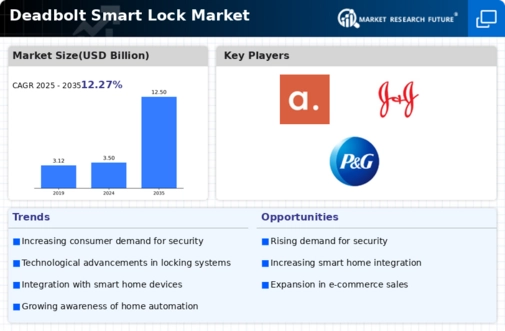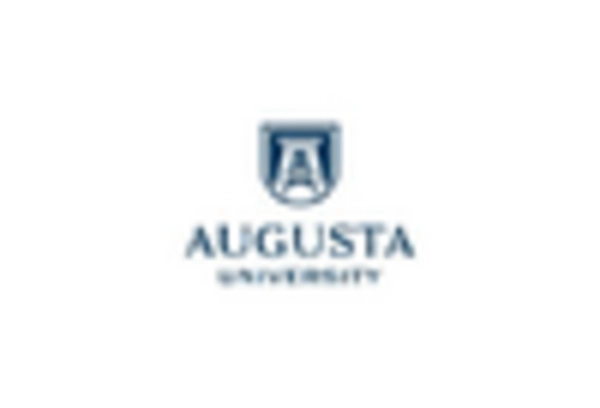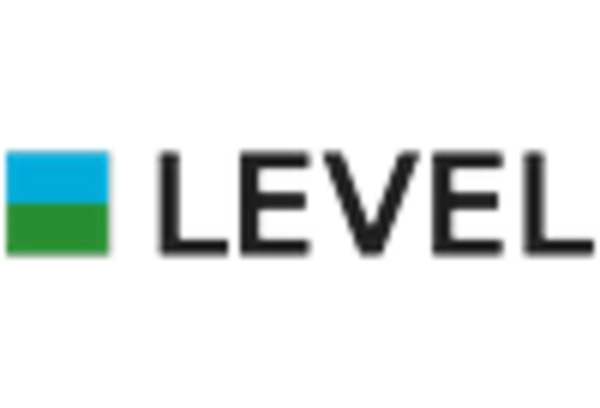Increase in Smart Home Adoption
The rise in smart home adoption is a pivotal driver for the Deadbolt Smart Lock Market. As more households integrate smart devices into their living spaces, the demand for compatible security solutions, such as smart locks, is expected to increase. Recent statistics reveal that approximately 30% of households have adopted at least one smart home device, with smart locks being among the most sought-after products. This trend indicates a shift in consumer preferences towards interconnected home systems, where security plays a crucial role. The Deadbolt Smart Lock Market stands to benefit from this trend, as manufacturers develop products that seamlessly integrate with existing smart home ecosystems, enhancing user experience and security.
Growing Awareness of Home Security
Consumer awareness regarding home security is on the rise, significantly impacting the Deadbolt Smart Lock Market. As individuals become more informed about the potential risks associated with traditional locking mechanisms, they are increasingly turning to smart locks as a viable alternative. This heightened awareness is fueled by media coverage of home invasions and thefts, prompting homeowners to invest in more secure locking systems. Market data indicates that nearly 60% of consumers consider security features as a primary factor when purchasing a smart lock. This trend suggests that the Deadbolt Smart Lock Market is well-positioned to capitalize on the growing demand for enhanced security solutions, as consumers prioritize safety in their purchasing decisions.
Rising Urbanization and Population Density
Urbanization and increasing population density are significant factors influencing the Deadbolt Smart Lock Market. As more people move to urban areas, the demand for secure living environments intensifies. High-density living situations, such as apartments and condominiums, often require advanced security measures to protect residents. Market analysis suggests that urban areas are witnessing a higher adoption rate of smart locks, as residents seek to enhance their security in densely populated settings. This trend is likely to continue, with urbanization projected to increase in the coming years. Consequently, the Deadbolt Smart Lock Market is expected to expand as manufacturers respond to the unique security needs of urban dwellers.
Evolving Consumer Preferences for Convenience
Consumer preferences are evolving towards convenience and ease of use, which is a key driver for the Deadbolt Smart Lock Market. Modern consumers increasingly favor products that simplify their daily routines, and smart locks offer features such as keyless entry, remote locking, and integration with mobile devices. Data indicates that over 70% of consumers prioritize convenience when selecting home security products. This shift in consumer behavior suggests that the Deadbolt Smart Lock Market must adapt to meet these demands, focusing on user-friendly designs and functionalities. As manufacturers innovate to enhance convenience, the market is likely to see sustained growth, driven by the desire for seamless security solutions.
Technological Advancements in Security Solutions
The Deadbolt Smart Lock Market is experiencing a surge in technological advancements that enhance security features. Innovations such as biometric recognition, mobile app integration, and remote access capabilities are becoming increasingly prevalent. These advancements not only improve user convenience but also bolster security measures, making smart locks more appealing to consumers. According to recent data, the adoption of smart locks is projected to grow at a compound annual growth rate of approximately 20% over the next five years. This growth is driven by the increasing need for advanced security solutions in residential and commercial properties, as consumers seek to protect their assets more effectively. As technology continues to evolve, the Deadbolt Smart Lock Market is likely to witness further innovations that will redefine security standards.
















Leave a Comment